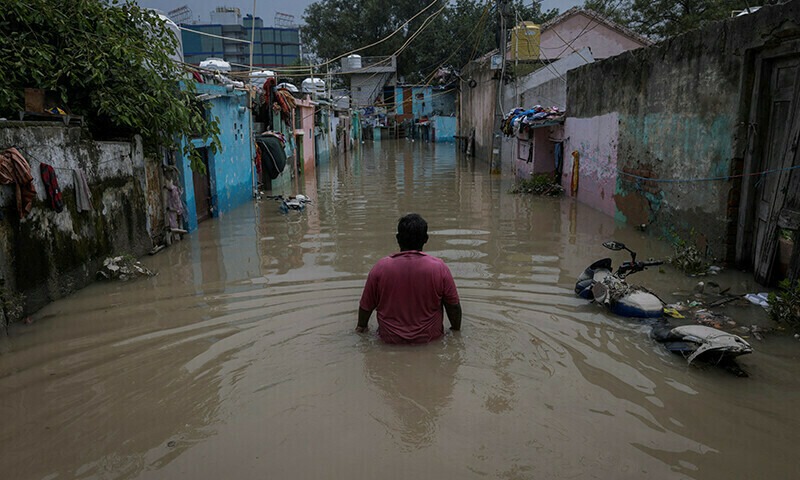As extreme rainfall continues to batter South Asia, leading to devastating floods that ignore national borders, experts are calling for greater regional cooperation to address this shared threat. Heavy monsoon rains resulted in flash floods and landslides that claimed approximately 200 lives in Nepal last month. This disaster was attributed to low-pressure systems in the Bay of Bengal and neighboring regions of India. Additionally, a flash flood in August killed at least 71 people near the India-Bangladesh border.
A 2021 World Bank report warned that nearly 80% of major South Asian cities are at risk of flooding, which could cost the region an estimated $215 billion annually by 2030.
Despite the increasing frequency and severity of cross-border disasters, a significant trust deficit between South Asian countries hampers collaborative efforts. Instead of working together, nations often resort to blame-shifting. For instance, while India is Nepal’s largest trading partner, the two nations grapple with border disputes. Similarly, while Bangladesh and India share strong economic ties, they face tensions over water sharing and illegal border crossings.
“No country in the region trusts others when it comes to riparian management due to political differences,” stated Harsh Vasani, a professor of international studies at Flame University in India. A Bangladesh government advisor indicated that the August flood was exacerbated by India releasing water from an upstream dam without prior warning.
India’s Ministry of External Affairs claimed that live data regarding rising waters was shared with Bangladesh, but this communication was disrupted due to a power outage caused by the floods. They emphasized that the region experienced its heaviest rainfall of the year, and most of the floodwater originated from catchments downstream of the dam.
The Need for Early Warnings
Climate change is anticipated to trigger more frequent and intense weather events, such as the August floods, according to Shaikh Rokon, head of the Bangladeshi non-profit Riverine People, which promotes river and wetland stewardship. However, Rokon argued that climate change should not be used as an excuse for the lack of preparedness within and among countries.
The United Nations’ 2015 Sendai Framework for Disaster Risk Reduction emphasizes the importance of providing early warnings and enabling communities to prepare before floods strike. Forecasts and timely communications have significantly reduced the death toll from monsoon floods to near zero in vulnerable South Asian communities, said Dharam Raj Uprety from the development organization Practical Action, which has implemented flood resilience projects in Bangladesh and Nepal.
However, while monsoon floods can be predicted 10 to 12 days in advance, flash floods caused by sudden rainfall provide much less warning, complicating efforts to alert affected communities, noted Sardar Uday Raihan, an executive engineer at Bangladesh’s Flood Forecasting and Warning Centre.
In 1972, Bangladesh and India established a joint river commission to enhance cooperation on flood warnings for the 54 rivers that cross their borders. India and Nepal have a similar arrangement. Nonetheless, experts argue that real-time data sharing on dam releases and upstream water levels would significantly improve flood management efforts.
The Case for Regional Cooperation
According to Sumit Vij, a professor at Wageningen University in the Netherlands, joint action is rare in the region. He emphasized the inefficiency of individual countries developing separate strategies to adapt to the same floods. “While we often stress locally-led adaptation, we need countries and regions within the same river basin or climatic area to align their adaptation efforts and share resources to tackle disasters,” Vij said.
One notable example of successful cooperation involves the Koshi and Karnali rivers, which flow from Nepal to India. This project, implemented by Practical Action and other organizations, upgraded weather stations and established a mobile alert system for rising waters, benefitting both Nepalese and Indian residents near the border.
Currently, Bangladesh and India have agreements on only a limited number of the rivers they share. Vij advocates for the formulation of a comprehensive agreement covering all 54 transboundary rivers, rather than engaging in lengthy negotiations for each one individually. “We, South Asian nations, need to work together,” he asserted.



